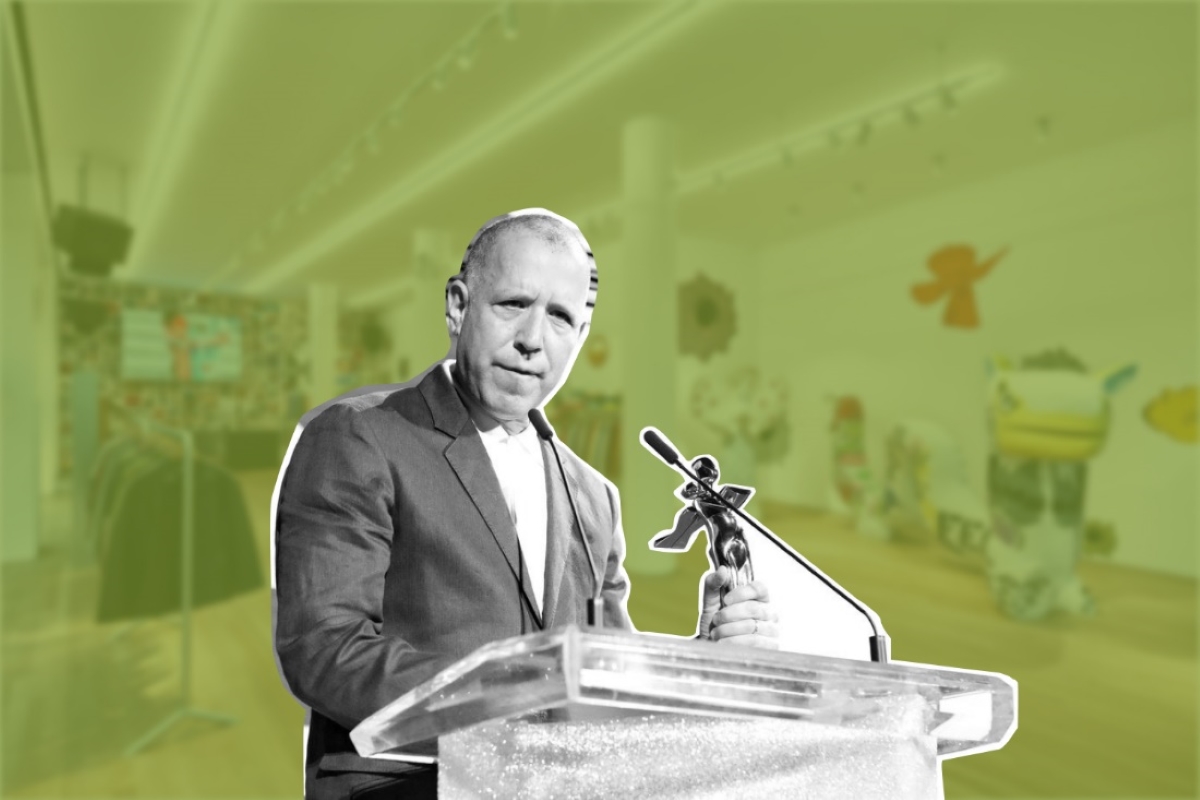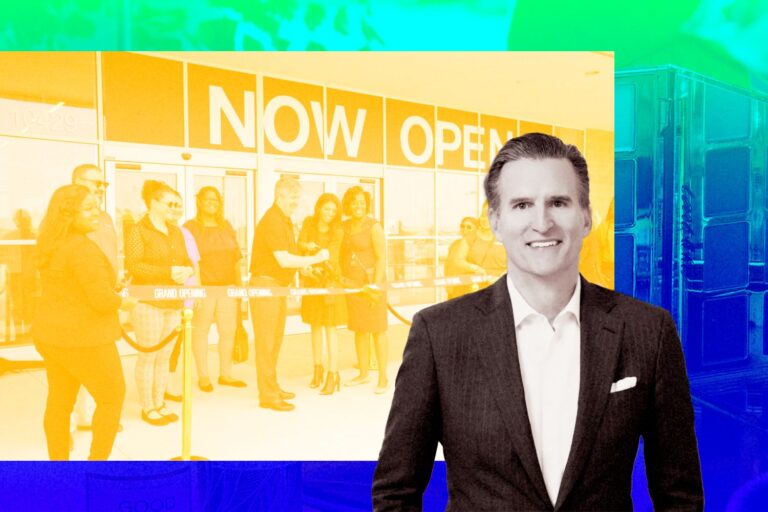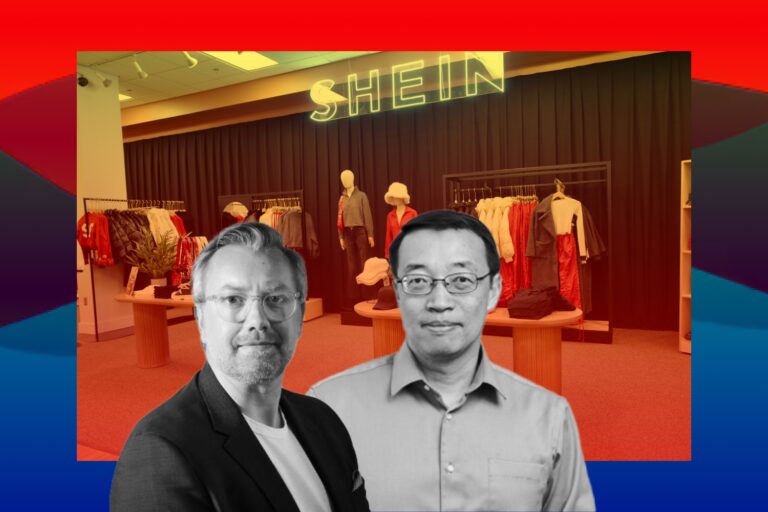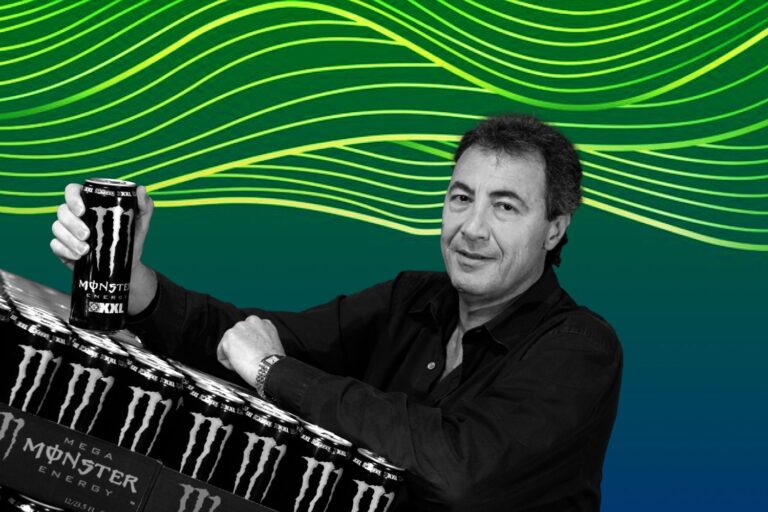Supreme: From a Low-Key Store to the World-Class Fashion Trendsetter
From a low-key beginning as a store down the street to the world-class iconic trendsetter, Supreme – instead of solely spending huge amounts of advertising money – has adopted brilliant approaches to marketing. Let’s go explore!
From the Street to the Top
In 1994, James Jebbia – a British-American man – founded a skateboarding shop in New York. At that time, the shop “Supreme” was just a retail shop which was selling the other companies’ products. By times, the shop started to change the business segment into design and sell their own products like shirts, jackets, and many more fashion items. At first, James Jebbia only approached the skateboarder by mainly selling skateboards then he realized that many of his fellow skateboarders wear unsuitable clothes for the activity.
Over 25 years in business, the brand has brought into the fashion industry a new wave of quality, style, and open-minded diversity. From a brand was started by a group of neighborhood kids to a globally influenced fashion brand in the world.
Supreme presently has 14 locations worldwide, including New York, Los Angeles, London, and Paris, as well as six in Japan. With the dramatic popularity of the brand, the investment from the Carlyle Group has valued the company at 1 billion dollars. Besides that, hundreds of blogs, forums, and social media pages have popped up to analyze the brand and its releases, and a contentious secondary market has developed around it.
Why Does Supreme Have Such a Unique Brand Identity?
Even if you do not own any Supreme products, you still have to admit that once someone mentions that name, the first thing that comes across your mind is the red-and-white logo.
Supreme has done a brilliant job to set their brand identity and image in public awareness. One of the most reasonable factors that can have a massive impact on this awareness is the brand logo. As the first impression of Supreme logo is about its simplicity. With just a rectangular size with only red and white as a dominant color. This simpleness has easily sneaked into people’s minds and keeps rewind due to its basic design. Normally, the brand designers would like to reach customers’ impression by producing the most remarkable and eye-catching logo or trademarks but with James Jebbia – he is heading to the target customers who love to be in streetstyle and comfortable outfit but also need to be ‘cool.’
A branding expert – Cliff Sloan has shared his thought about Supreme logo once in the interview with CNBC, he said, “What is great about the Supreme logo? It is simplicity. It is simple. It is clean. It pops and in our culture that logo breaks through instantly.”
An eye-catching logo is not the only efficient way to stay on top of the brand lists. One more factor that goes along is image persistence. You can hardly find any Supreme products that do not have the name on it. Depending on each product design, the logo will appear in diverse ways but mostly the brand name is the spotlight. Therefore, customers can hardly forget where ‘this hoodie’ came from. In addition to this advantage, the effect of the appearance can make the company’s customers become a walking-marketing. Imagine how many people are around your customer and how they can all be attracted to items. With just a walk around a mall, your customers can help you gain more 45% of new buyers.
Diversification Counts for This Fashion Trendsetter!
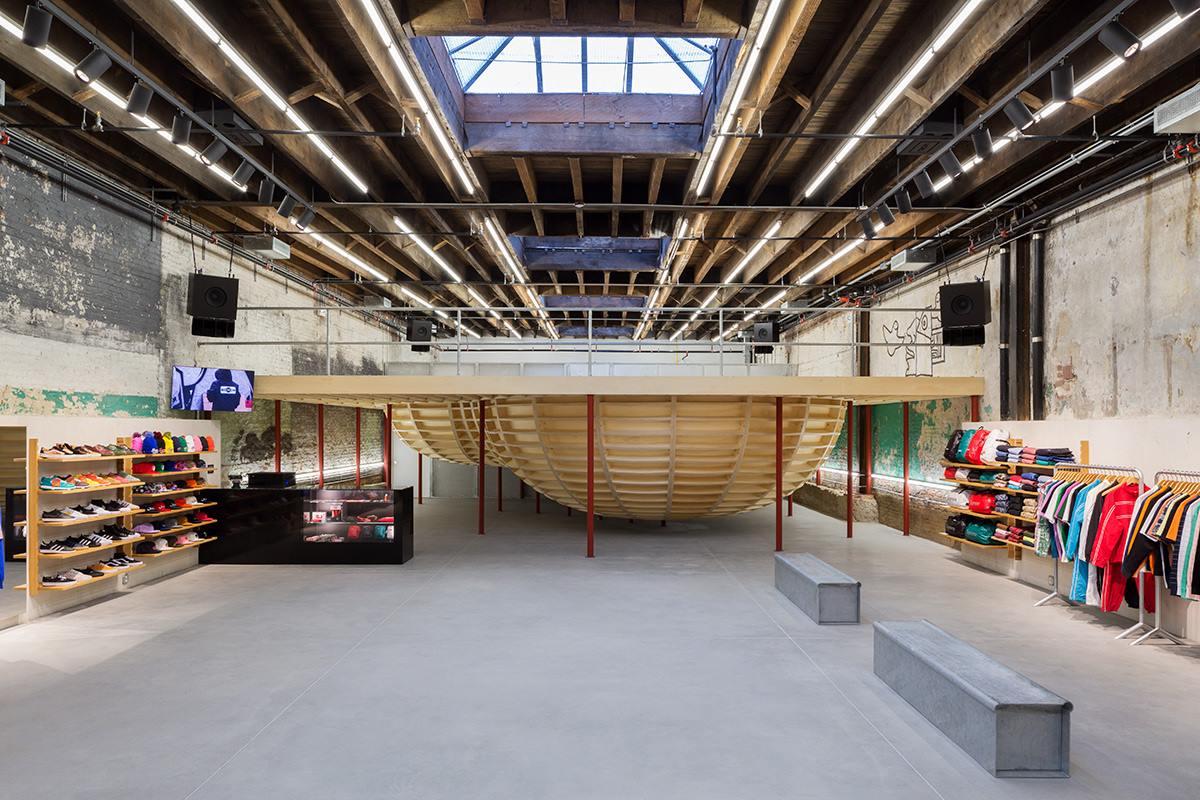
Supreme really knows how to meet the customers’ needs. From a skateboard store, they have dramatically changed into the first line trending brand. This required them to have more vaster variety of items that can fit in with anyone demanding.
Supreme has always designed a wide range of products, including T-shirts, coats, sweaters, shoes, jeans, skateboards, and a variety of out-of-mind things. Their clothes are intended to appeal to young people, particularly aficionados of hip-hop, skateboarding, and punk rock culture. Supreme’s offerings range ensures that any person who appreciates streetwear will discover the ideal piece. Being under the effect of collective trends, their loyal customers tend to buy anything that has been produced by Supreme. With the influence of the distinct options, Supreme continues in surprising the world with many different items such as baseball sticks, luggage, megaphones, and even Oreo cookies. More than that, Supreme has a hobby of producing irrelevant things to be sold at a fashion brand. For example, in 2016, Supreme opened the order stage for a brick and this brick cost 30 dollars.
As a results, the brand also gains more female customers as reflecting the growth of female skaters as well as young culture’s amazingly genderless attitude to wearing and living. And with this gender equity, the reputation of the brand has risen more than ever before.
Scarcity Creates the Strong Sense of Hunger & Pushes Brand Awareness Up
Being different from the other retailers, Supreme never resells anything they have put on stocks. That means if you miss this chance to earn it, you will never see it in the store again. There is no “next time”. Due to these scarcity items, the term “limited edition” appeared. Following this statement, the CEO of the brand still keeps denying it by saying he never meant to make things become too limited like that, but we can obviously see how successful this strategy is.
This strategy is a wise move by approaching straight to the human nature personality. People, especially teenagers, love to own things that is rear and trendy. Everyone wants to have the feeling of showing off their hobby and self-confidence. And that is when they need things to express it for them. It is understandable why there are always miles of line in front of Supreme stores before every 11:00 AM on Thursday. By setting up this time and date rapidly, customers shape their own habit and can “make time” to get in the line.
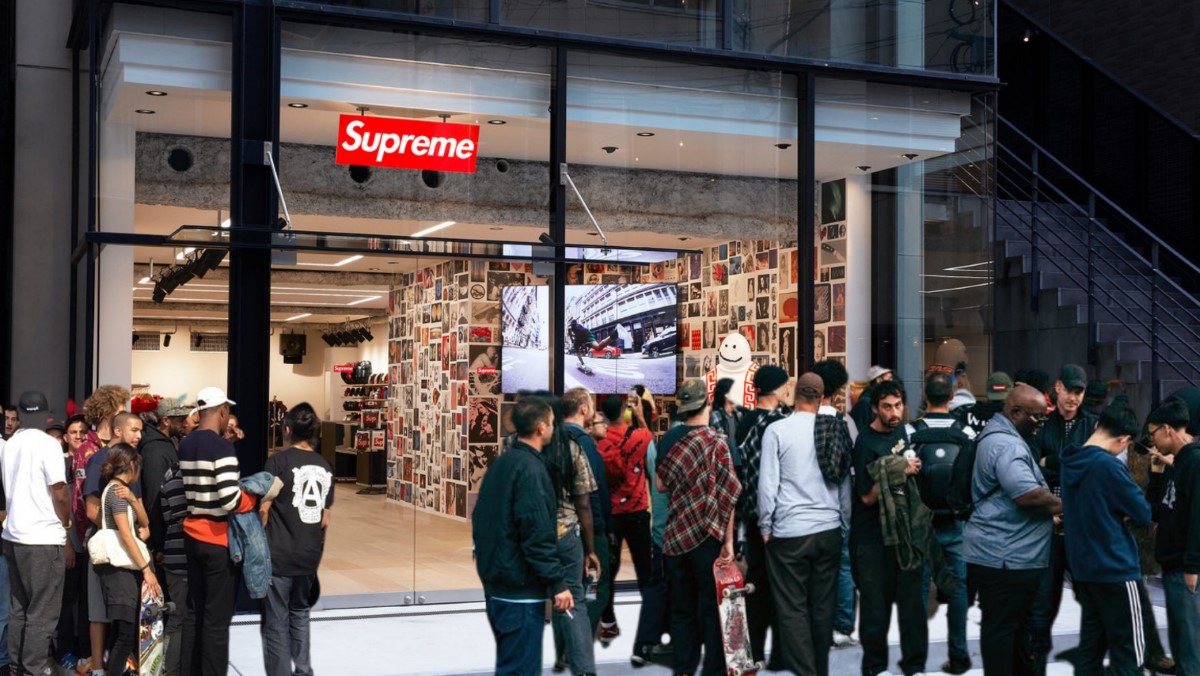
“What makes for successful brand is when that brand becomes an extension of self. It becomes a personal statement for the people who are using it. And in the case of Supreme, it became a badge of cool.” said Cliff Sloan.
Thus, this limited trend also pushes the desire of buyers higher than ever. There is a term called FOMO- fear of missing out- can describe this fascination. Everyone that is affected by this FOMO cannot stand to step aside but right away searching for the newly released products. This helps to drive more traffic to the company website and the retailer.
The Effect of Aftermarkets & Internet Can Be Immensely Powerful
Another market that has been impacted by the limited items trending is the aftermarket. This market is used to describe the place where people sell something they have used. This place is not a very official place to do business, but it is a potential market. Many customers, once earn Supreme products, immediately sell them on. Many of the buyers do not get in the Supreme collection world for their favor, they do it based on its value.
Supreme did not invent this phenomenon, but it has driven the brand’s rise. Many of the customers who are forcing things to sell out on Supreme’s website or in store are merely doing so to benefit in the resale market. For many, reselling trendy products has become a successful business. Social media makes it simpler to promote unique products, it is a significant facilitator for the resale industry. Previously, if someone possessed a unique pair of sneakers, they might have only been able to sell them to their friends and acquaintances. Now they can sell things at even higher prices than the original cost.
James Jebbia was once asked about the second market, he shared, “Basically, I don’t like people getting jacked for a T-shirt. I much prefer if someone buys something from us that they plan to wear it and not selling.”
According to the founder’s sharing, we can see that Supreme is not really happy with the reselling idea but actually it is the most efficient company valuation escalation. Consumers buy and resell products at exorbitant rates – the streetwear resale marketplace lists over 40,000 Supreme pieces. For example, a bomber jacket that was initially offered for $3,000 is now marketed at $20,000. Imagine you only sell a T-shirt for 20 dollars but after 3 hours it becomes 200 dollars, even though the profit is not running to your brand, but it eventually brings many benefits to your company reputation. This feeds a virtuous circle in the resale market, making the brand even more unique and popular.
Sam Sheffer – a Supreme collector – once expressed with the CNBC interviewer about the resell market. He said, “it’s kind of like investing in something that you know will retain its value that you know will rarely ever go below what you paid for it and then there’s always a good chance that you will make more money than you spend on.”
Collaborations Elevate Brand Reputation
One more thing about Supreme, in addition to its memorable logo, is the density of appearance. You do not only see Supreme products in Supreme stores but you can also have some Supreme clothes with another brand. Everything started when James Jebbia realized that many Supreme customers like to mix and match the brand item with Louis Vuitton, he right away asked to have a collaboration.
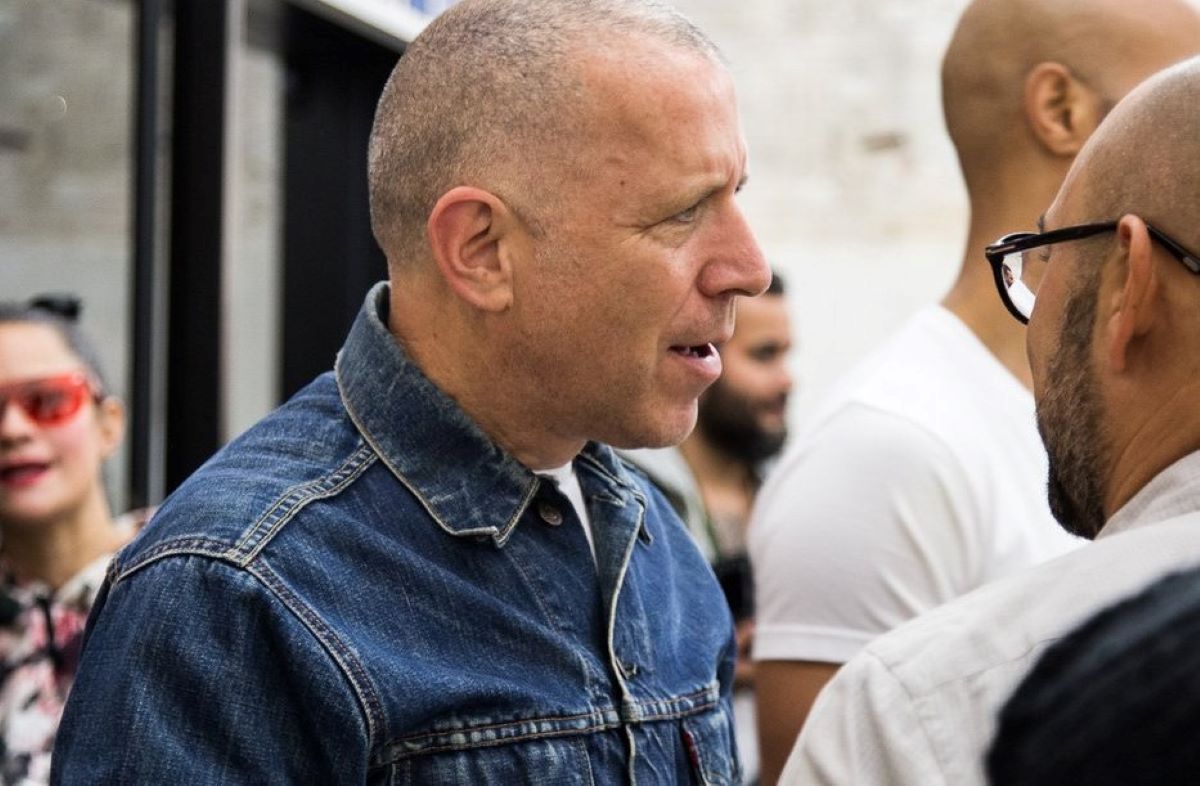
Supreme’s fashion world street cred has been strengthened along the way after customized pack bag with luxury fashion company Louis Vuitton, proving to that state is many following contract businesses with other worldwide brands like Nike, Vans, and Levi’s. With a great reputation, many other big brands were willing to shake hands with Supreme. Not only with the fashion brand, Supreme also worked with some lifestyle brands like Braun, Fender… and furthermore, they have many influencers and celebrities to collaborate with- such as Lady Gaga, Kate Moss, Kanye West, etc. Celebrities that work with Supreme can sense the genuineness that pervades everything they produce, and they are inclined to wear the items themselves.
When it comes to influencer marketing, Supreme has always held true to its core principles. First and foremost, it is the genuine relationship with brands/influencers that this trend setter prioritizes beyond anything. Besides, Supreme team makes it possible for collaborators to actively participate in the collab with the brand. Interestingly, they also take steps to outline major advantages of cooperating with the brand.
Collaborating with celebrities is an exceptional step of marketing but it has to be cautious in selecting the partner. Supreme has picked rigorously their influencers that have the same impact of the fashion segment to input more affect to their items value.
Additionally, the brand’s art partnerships feature underground graffiti icons such as JA One as well as prominent modern painters such as Takashi Murakami. Old Supreme skateboard decks created by artists such as Damien Hirst are now viewed as canvases and sell for hundreds of dollars at art auctions. Collaborations have ranged from simple reprints of iconic images to major re-designs of the brand’s famed box logo.
Community Influences Amplify a Viral Commercial
Last but not least, the power that a skateboard community brings to Supreme must be the main factor in their success nowadays. Back in 1994, James Jebbia decided to open a skateboard shop to serve and fulfill his passion for skateboarding. With his smart target and alluring, the store watchers turn to loyal customers. In that time, it is not hard to find other skateboard retail outlets, but Jebbia’s store suddenly spotted up. In reality, the customers once walk into Supreme store find it comforting and attractive due to the way that James set up his products.
“When you buy streetwear, you are doing it to be part of a particular community…. It is not about owning the Supreme T-shirt it is about the concept of understanding the culture and yourself out of there” said Justin Gage – a Streetwear Data Analyst.
So why a community? James Jebbia has made a strong commitment throughout the brand’s time that he will serve and inspire the streetwear community. This has had a noticeably substantial impact on the majority of fashion consumers.
“The reason why people want to wear Supreme is because they want to be a piece of culture. A crowbar brick and you know they can last forever. Those things will be in museums in 50 years.” said Joe Migraine- a Supreme collector.
The Bottom Lines
In spite of spending a million budget into commercial and digital advertising, Supreme – the trendsetter in the fashion world – has made a remarkable history in streetwear style and gives a hand in proving the importance of image persistence and the power of “limited edition.” The more Supreme foster customers’ sense of hunger, the more the brand awareness expands. Will Supreme stand on the throne for the next 50 years? It is relied on how “Supreme fever” still impact on the customers. But for now, a collection of Supreme items can cost a fortune.

